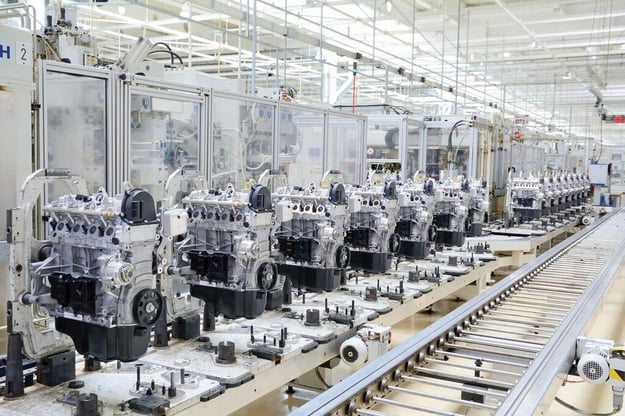Topics: Advanced Planning and Scheduling, manufacturing, Lean Manufacturing, production planning, Implementation, APS, APS, manufacturing technology
Lean means producing only what is required to fulfill customer orders and no more, assuring continuous process flow and transparency, and aiming for zero defects along the way. Just as lean production reduces waste, maximizes value, and increases throughput in a manufacturing facility, so can lean's key concepts in improving the design, or redesign, of an organization as a whole.
Lean is a method of simplifying production and analyzing each step of the process so that it is as efficient and waste-free as possible. This can also be done throughout an organization by eliminating duplicate responsibilities and positions and slimming down redundant work that does nothing to enhance the organization's growth. Identifying bottlenecks in areas other than on the production floor can be useful when searching for specific areas that can be streamlined for efficiency. Total organizational performance becomes more important than reducing costs in one area or increasing turn-around in another. This, of course, requires the scrutiny of upper management who are tasked with making decisions that lead to long term company growth.
One of lean's key concepts is designing an organization with a built-in acknowledgment that improvements will be ongoing, rather than a "one-off" development. Lean manufacturing pivots around a learning cycle of continuous examination and testing alternate methods for processes. Although designing an organization may initially take a big effort on the part of management and staff alike, all parties need to understand that imperfections will be addressed as new iterative designs are tested. This is the best process to make company-wide improvements utilizing a lean methodology.
Lean production methods examine processes in real-time, assessing whether a piece of equipment has sufficient capacity to fulfill the orders in-hand. Managers weigh the costs and benefits of adding to staff, doing some cross-training, or requiring overtime when demand is brisk. Similarly, the organization outside of the production floor can be evaluated in the same way. Many examples come to mind. When volume in accounting increases, are there enough people cross-trained so that the increase can be handled with accuracy? Does marketing check with production before running promotions to be sure that capacity can meet increased demand? Is production communicating with management regarding the need to keep a continuous flow of work going for optimum efficiency?
Viewing the whole organization when designing for lean production makes sense. All the pieces of the company are, after all, involved: customers, sales, the supply chain, manufacturing/product design, fulfillment. A narrow focus on just one aspect of the waste-reducing concept - for example, limiting raw materials inventories for JIT cost advantages - without the involvement of people and processes vertically as well as horizontally can jeopardize the value to an organization. Basically, without buy-in throughout an organization, lean production may not lead to optimal results. In addition, without defining how lean will work throughout a company may lead to differing definitions in different departments.
Lean can be applied to every business and in every department. It is a whole new way of thinking about an organization. Limiting the concept to production alone keeps an organization from realizing the full benefits of maximizing value to the customer while minimizing waste.
Topics: Advanced Planning and Scheduling, manufacturing, Lean Manufacturing, production planning, Implementation, APS, APS, manufacturing technology
0 Comments
No video selected
Select a video type in the sidebar.







LEAVE A COMMENT